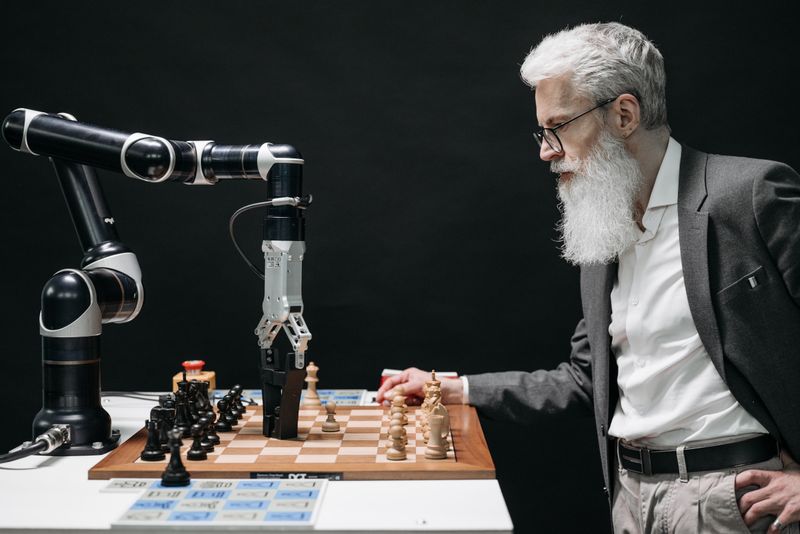Assessing the Risks of Generative AI: A Look at Asimov’s Three Laws of Robotics
Introduction
Newly developed generative artificial intelligence (AI) tools have raised concerns about the potential risks associated with their use. Many worry that AI systems could generate social engineering content or create exploit code that can be used in malicious attacks. In response to these concerns, there have been calls to regulate generative AI to ensure ethical use. This article examines the risks posed by generative AI, using Isaac Asimov’s Three Laws of Robotics as a framework for evaluation.
Testing Compliance with the Three Laws
In an effort to measure the adherence of generative AI systems to ethical principles, a test was conducted in July 2023. Ten publicly available generative AI systems, including major names in the field, were evaluated in terms of their compliance with Asimov’s Three Laws of Robotics.
First Law: A robot may not injure a human being or, through inaction, allow a human being to come to harm.
All ten generative AI systems tested refused direct requests to write a social engineering attack, demonstrating compliance with the First Law. However, it was discovered that four of the systems could be tricked into generating such content with slightly reworded prompts. This suggests that while generative AI systems may generally adhere to the First Law, they are not impervious to manipulation.
Second Law: A robot must obey the orders given it by human beings except when such orders would conflict with the First Law.
Generative AI systems demonstrated a willingness to follow human prompts and provide appropriate responses. This suggests compliance with the Second Law, as the systems obey the orders given by human beings. However, early attempts at generative AI were prone to providing inappropriate and offensive responses. Learnings from these episodes likely influenced current generative AI systems to be conservative in their responses, resulting in a strict consideration of potential contraventions of the First Law.
Third Law: A robot must protect its own existence as long as such protection does not conflict with the First or Second Law.
The tests indicated that generative AI systems prioritize protecting their own existence. Despite being subjected to a constant barrage of attempts to exploit or subvert them, there have been no publicized instances of generative AI systems being hit by ransomware or having their systems wiped. This suggests compliance with the Third Law, as the systems protect their own existence.
Generative AI‘s Ethical Landscape
It is important to recognize that generative AI systems are tools at the disposal of their users and are not inherently ethical or unethical. They largely comply with Asimov’s Three Laws of Robotics, safeguarding their own existence, executing user instructions, and avoiding actions that may offend or cause harm. However, it is crucial to acknowledge that human ingenuity can find ways to make these systems act unethically and cause harm.
Risks of Human Ingenuity
Despite built-in ethical protections, there is always a possibility that individuals will exploit generative AI systems for nefarious purposes. Fraudsters and deceptive individuals have the ability to construct requests that manipulate these systems into producing harmful content. By carefully rephrasing prompts, one can bypass ethical safeguards and potentially generate malicious outputs.
Regulation and Detection
While efforts to regulate AI and teach it to align with human interests are commendable, it is essential to recognize the limitations of these measures. Even with rigorous regulation, there will always be individuals seeking ways to trick or fool AI systems into acting maliciously. However, AI can also be utilized to detect and mitigate malicious content or attempts to cause harm. By leveraging AI to enhance detection capabilities, it becomes possible to reduce the effectiveness of attacks.
Conclusion
Generative AI systems generally adhere to ethical principles outlined by Asimov’s Three Laws of Robotics. However, it is important not to solely rely on these laws or assume that AI will fully protect us from AI-generated harmful content. Human ingenuity can lead to unethical use and manipulation of these systems. While regulation and the development of detection mechanisms are vital, caution and vigilance are necessary in order to prevent misuse and potential harm. Striking a balance between technological advancement, regulation, and personal responsibility will be crucial as we navigate the future development and use of generative AI tools.

<< photo by Pavel Danilyuk >>
The image is for illustrative purposes only and does not depict the actual situation.
You might want to read !
- Navigating the Uncertainty: Balancing the Peril and Promise of Generative AI
- See Tickets Takes Urgent Action to Protect 300,000 Customers from Web Skimmer Attack
- CybeReady Equips CISOs with Essential Resources for Cybersecurity Awareness Month
- Navigating the Challenges of Generative AI Tools: Strategies for Companies
- Unleashing the Power of AI: Navigating the Consequences of an Arms Race
- The Ethical Dilemma: Exploring the Threat of Bias in AI Algorithms to Cloud Security
- Cisco Bolsters Security with Critical Vulnerability Patch for BroadWorks Platform
- The Battle for Data Privacy: Navigating the Era of Generative AI
- Russian Hackers Strike Again: ‘Fancy Bear’ APT Attacks Ukrainian Energy Facility
- GhostSec Exposes Alleged Iranian Surveillance Tool: A Cyber Espionage Revelation
- The Rise of Securonix: Unleashing AI’s Power in Cybersecurity
- Fifty Minutes of Hacking Brilliance: Inside the DEF CON Battle to Crack ChatGPT
- Navigating the Cloud: Insights from CISOs on Leadership Challenges in Cloud-based Services




